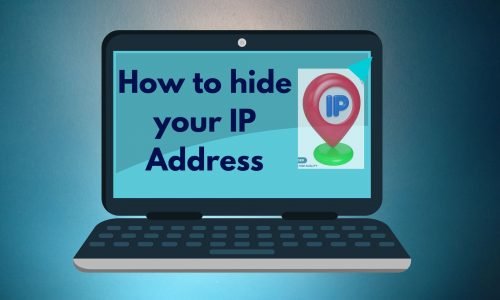The Internet ran out of Internet addresses. One may have heard the news: the last squares of IPv4 addresses on the Internet have been assigned. The main fundamental innovation that fueled the Internet protocol addresses (at some point seen a number like 99.48.227.227 on the web? This is an IP address), since the Internet’s origin will soon be exhausted.
Another innovation will have its place, however. The replacement for IPv4 is IPv6, a framework that will not only propose undeniably more mathematical locations but will work on address tasks and extra security highlights for the organization. Progress from IPv4 to IPv6 is likely to be difficult, however. The vast majority are new to IPv4 and IPv6, significantly less of the potential effect that switching to IPv6 can have on their lives.
That’s why we ordered this short manual for IPv4 and the inevitable move to IPv6. We clarify the two adaptations of the IP and why they are important. Likewise, we explain what one can expect in the coming years when billions of websites, organizations, and people make the move to the new period of the Internet.
What is IPv4?
IPv4 represents Internet Protocol form 4. It is the hidden innovation that makes it feasible for us to associate our gadgets to the web. At whatever point a gadget gets to the Internet, it is allowed an exceptional, mathematical IP address like 99.48.227.227. To send information starting with one PC then onto the next through the web, an information bundle should be moved across the organization containing the IP locations of the two gadgets.
IPv4 represents the adaptation of the Internet protocol 4. It is the hidden innovation that makes the interface of our gadgets with the web viable. Wherever a gadget accesses the Internet (regardless of whether it is a PC, Mac, cell phone, or another gadget), it is designated an extraordinary mathematical IP address such as 99.48.227.227. To send information starting with a PC and then to the next via the web, an information package must be moved by the organization containing the IP locations of the two gadgets. Without IP addresses, PCs would not have the option to transmit and send information to each other. It is fundamental to the web framework.
What is IPv6?
IPv6 is the cutting edge Internet Protocol (IP) address standard planned to enhance and in the end supplant IPv4, the convention numerous Internet benefits use today. Each PC, cell phone, home mechanization segment, IoT sensor and some other gadget associated with the Internet needs a mathematical IP address to impart between different gadgets. The first IP address conspires, called IPv4, is running out of addresses because of its inescapable use from the multiplication of such countless associated gadgets.
IPv6 is the 6th update of the Internet protocol and the replacement of IPv4. It also works for IPv4, as it provides the extraordinary mathematical IP that tends to be essential for Internet-enabled devices to transmit. In any case, it presents a significant contrast: it uses 128-digit addresses.
Why are we running out of IPv4 addresses?
IPv4 uses 32 pieces for its Internet addresses. This means that it can maintain 2 ^ 32 IP addresses in total – about 4.29 billion. This may seem like a ton, however, all of the 4.29 billion IP addresses have been assigned to different establishments, generating the emergency we face today. But let’s get straight to the point: we haven’t run out of addresses yet. Many of them are unused and own foundations like MIT and organizations like Ford and IBM. More IPv4 deliveries are accessible to allocate and more will be exchanged or sold (since IPv4 addresses are currently a scarce asset), but they will end up being a more difficult product to find over the next two years until it is released to the web.
How does IPv6 address this problem?
As recently expressed, IPv6 uses 128-digit Internet addresses. Therefore, it can maintain 2 ^ 128 Internet addresses – 340,282,366,920,938,000,000,000,000,000,000,000,000,000 of them to be precise. This is a large number of addresses, so numerous that it requires a hexadecimal structure to show the locations. At the end of the day, there is a considerable amount of IPv6 delivery to keep the Internet up and running for an incredibly long time.
So why don’t we just change?
The consumption of IPv4 addresses was anticipated years earlier, so the change is underway in the most recent decade. Nevertheless, progress has been moderate – only a small part of the web has been replaced by the new convention. Besides, IPv4 and IPv6 function as equal organizations – trade-in information between these conventions requires extraordinary passages.
To make the switch, the schedule and options must be changed to help the developed organization. This will require significant investment and money. The main genuine test of the IPv6 organization will take place on June 8, 2011, World IPv6 Day. Google, Facebook, and other notable web organizations will test the IPv6 organization to see what it can handle with what needs to be done for the world to be transferred to the new organization.
How will this influence me?
Initially, it will not significantly affect life. Most frameworks support IPv6, including Mac OS X 10.2 and Windows XP SP 1. In any case, several switches and workers do not maintain it, making an association between a gadget with an IPv6 address for a switch or a worker offering inconceivable lone IPv4 support. IPv6 is still in its infancy; it has a lot of bugs require, however it must be done all together for the web to work as it does today.
The Usage Cycle
IPv4 uses a 32-cycle address for its Internet addresses. That implies it can offer help for 2 ^ 32 IP addresses altogether â € ”around 4.29 billion. That may appear to be a great deal, yet all 4.29 billion IP addresses have now been relegated, prompting the location deficiency issues we face today.
The content type of the IPv6 address is XXXX: XXXX: XXXX: XXXX: XXXX: XXXX: XXXX: XXXX, where every x is a hexadecimal digit, addressing 4 pieces. Driving zeros can be discarded. The twofold colon (: 🙂 can be utilized once in the content type of a location, to assign quite a few 0 pieces.
Dual-IP Stacks
With Dual-IP stacks, the PCs, switches, switches, and different gadgets run the two conventions, yet IPv6 is the favored convention. A regular strategy for organizations is to begin by empowering both TCP / IP convention stacks on the wide territory organization (WAN) center switches, at that point border switches and firewalls, trailed by server farm switches lastly the work area access switches.
ThousandEyes has upheld IPv6 with the goal that associations can use IPv6 across the entirety of their test types (web, organization, voice, directing) and specialist types (cloud, venture, endpoint). ThousandEyes Cloud Agent uphold for IPv6 is given on six landmasses permitting worldwide inclusion for associations. ThousandEyes likewise underpins the utilization of double-stack IPv4 and IPv6 Enterprise Agents. Undertaking Agents can have the two tend to allotted and executes tests dependent on a client characterized inclination for just IPv4, just IPv6, or an inclination for IPv6.




